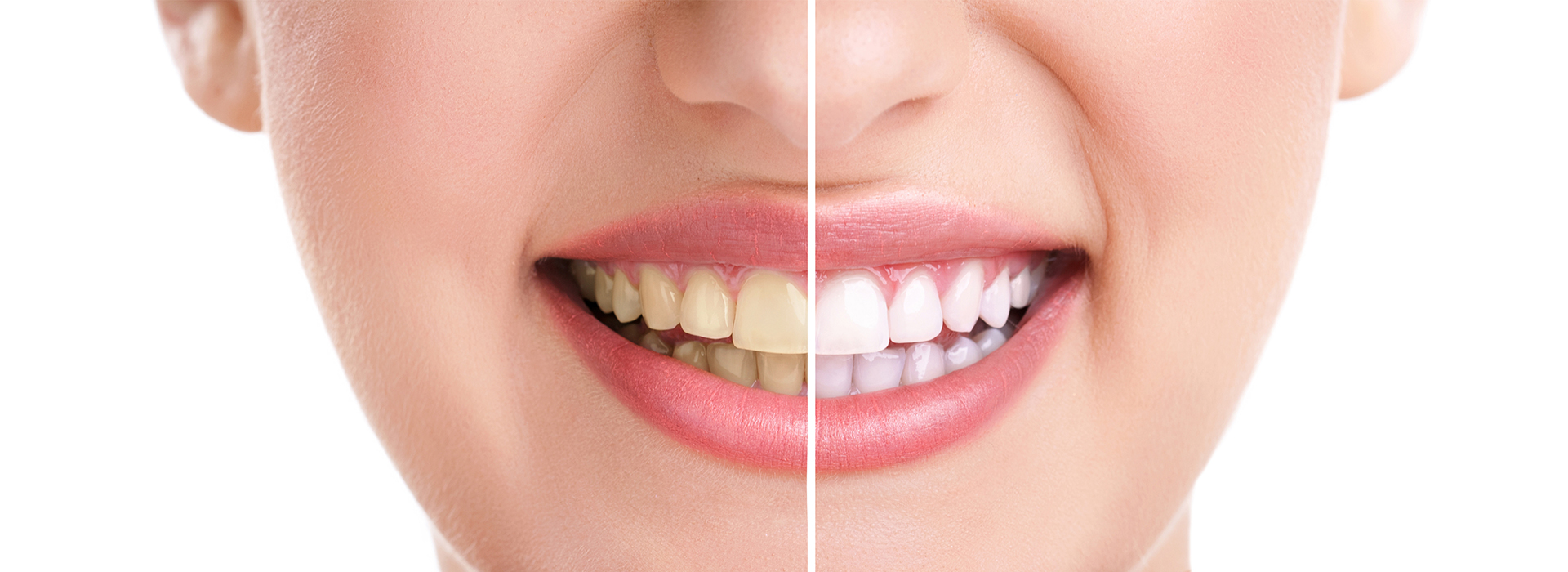
A brighter smile can change the way you feel about yourself and the way others perceive you. Many adults notice gradual darkening of their teeth over time and want a safe, predictable way to restore a fresher appearance. Our approach emphasizes both visual improvement and long-term oral health, so patients achieve results that look natural and last as long as possible.
At the office of Murphy Dentistry, we combine modern whitening technology with careful evaluation so each patient receives a treatment plan tailored to their needs. Whether you want a quick in-office refresh or a more gradual improvement with a custom take-home system, our goal is to deliver reliable results while protecting tooth structure and soft tissues.
This page explains how whitening works, what causes tooth discoloration, which options are available, who is an ideal candidate, and how to maintain your brighter smile after treatment. The information is intended to help patients make informed decisions and set realistic expectations before proceeding with any cosmetic dental procedure.
Tooth color changes for many reasons, and understanding the cause helps determine the best treatment. Extrinsic staining affects the outer enamel and is commonly caused by foods and drinks (coffee, tea, red wine), tobacco use, and certain highly pigmented spices. These surface stains often respond well to professional cleaning and whitening.
Intrinsic discoloration originates from inside the tooth and is more complex. It may result from antibiotic exposure in childhood, dental trauma that changes internal tooth structure, large restorations, or aging. Thinning enamel also makes the yellowish dentin beneath more visible, producing a darker overall appearance that is harder to reverse with simple abrasion or over-the-counter products.
Some discoloration reflects a combination of both types. A comprehensive assessment allows your dental team to identify whether surface cleaning, bleaching, or restorative options (veneers or crowns) will achieve the most natural and lasting outcome. This diagnostic step is critical to avoid unnecessary procedures or unrealistic expectations.
Professional whitening generally falls into two reliable categories: in-office treatments and dentist-supervised take-home systems. In-office procedures typically use higher concentrations of whitening agents applied under controlled conditions, often with supplemental light or heat to accelerate results. These visits are ideal for patients who want dramatic improvement quickly and who appreciate the convenience of a single appointment.
Take-home whitening systems use custom-fitted trays and professional-strength gels that patients wear for prescribed periods at home. These are gentler on the enamel and allow for gradual lightening over days or weeks. Because trays are tailored to each mouth, they distribute gel evenly and limit soft-tissue contact, improving comfort and safety compared with generic over-the-counter kits.
Both options benefit from professional oversight. A dental exam before whitening checks for decay, gum disease, or exposed root surfaces that could cause increased sensitivity or compromised results. Your dental team will recommend the pathway that balances efficacy, safety, and patient lifestyle.
Most professional whitening relies on peroxide-based chemistry. Hydrogen peroxide and carbamide peroxide are common active ingredients that penetrate enamel and oxidize stain molecules, breaking them into smaller, less visible fragments. The reaction lifts color from both surface and some internal stains, producing a visibly lighter shade.
During an in-office session, the clinician isolates the gums and applies the bleaching gel directly to the teeth, monitoring progress and managing comfort. For take-home treatment, patients receive fitted trays and instructions on timing, frequency, and safe handling of the gel. Both approaches are effective when used according to professional guidance; key differences are speed of results and level of supervision.
Sensitivity is a potential side effect and usually temporary. It can occur during treatment or for a short period afterward, especially if tooth enamel is thin or there are exposed root surfaces. Your dentist may recommend desensitizing toothpaste, brief interruptions in treatment, or specific products designed to reduce discomfort while still achieving whitening goals.
It’s important to recognize a limitation: whitening agents lighten natural tooth structure but do not alter the color of dental restorations such as crowns, veneers, or composite fillings. If restorations are present in the visible smile, your clinician will discuss whether replacement or alternative cosmetic approaches are necessary to attain a consistent, harmonious result.
Whitening is appropriate for many adult patients, but it isn’t universally recommended. A dental examination identifies concerns such as active decay, untreated gum inflammation, cracked teeth, or large defective restorations that should be addressed before any bleaching begins. Treating these issues first protects teeth and optimizes the outcome.
Patients with generalized enamel wear, significant sensitivity, or certain intrinsic stains (for example, those caused by some medications) may experience limited improvement from whitening alone. In these cases, the dental team will review other cosmetic options that can deliver a more predictable change in appearance while also protecting structural integrity.
Pregnancy and nursing are situations when elective whitening is commonly deferred as a precaution; your provider will advise on timing. For younger patients, enamel maturation and long-term considerations are taken into account. Ultimately, the decision balances aesthetic goals with oral health priorities and comfort.
The first 48 hours after whitening are when teeth are most prone to re-staining because microscopic changes in the enamel temporarily increase susceptibility to pigments. Patients are advised to avoid deeply colored foods and beverages—coffee, red wine, dark sauces, and brightly pigmented fruits—during this period to preserve the initial improvement.
Longer-term maintenance combines good daily habits with professional care. Regular brushing with a fluoride toothpaste, flossing, and routine cleanings reduce surface buildup and prolong the effect of whitening. Limiting or modifying behaviors that stain teeth—using a straw for dark drinks, rinsing after meals, and reducing tobacco use—also helps sustain results.
Periodic touch-ups can restore shade loss over time. Many patients benefit from occasional application of a custom take-home gel in fitted trays or a repeat in-office session as recommended by their clinician. These touch-ups are scheduled according to individual wear patterns, dietary habits, and how quickly a patient’s teeth tend to darken.
If sensitivity occurs after treatment, simple measures such as using a toothpaste formulated for sensitive teeth, avoiding very hot or cold foods for a short time, and following any specific guidance from the dental team typically resolve discomfort. If sensitivity is prolonged or severe, patients should contact the office for assessment and follow-up care.
Whitening can be a safe and effective way to refresh your smile when performed under professional guidance and paired with sensible aftercare. If you’re considering teeth whitening and want a personalized recommendation based on a careful oral exam, contact us for more information about your options and what to expect.

While an overwhelming selection of over-the-counter teeth whitening products is readily available for purchase at stores or online, it's imperative to keep in mind that the healthiest and most effective methods of care are those professionally supervised by your dentist. With a teeth whitening procedure provided by our office, we can safely, comfortably, and effectively transform your smile by up to several shades in a short amount of time.
Teeth whitening offers a simple and non-invasive way to whiten and brighten your smile. Whitening products contain various strengths of biologically safe hydrogen peroxide or carbamide peroxide that act as bleaching agents on stained or discolored dental enamel. By breaking the stains into smaller pieces, these bleaching agents make the color less concentrated and your teeth brighter.
Every patient is different, and despite the fact that many people experience no sensitivity or pain with a professional teeth whitening, there are some that do. Although considered a minimally invasive cosmetic procedure, some temporary discomfort during and following the procedure may ensue. It helps to stick to room temperature beverages for a few days following a teeth whitening. You can also take over-the-counter pain medication as you would for a headache. If you have a history of sensitive teeth, we may select a gentler formulation of whitening products or an alternative procedure.
It's essential to keep in mind that every patient has unique needs and specific requirements of care. In general, individuals with yellow tones to their teeth respond best to teeth whitening. Brown and grayish tinted teeth respond less well to bleach and may require significantly longer dentist-supervised tooth whitening regimens or alternative cosmetic treatments. Finally, teeth whitening may not be recommended in the presence of sensitive teeth, worn enamel, and significant gum disease.
For darkly stained teeth, a whitening procedure may not provide the cosmetic results desired. In these cases, we'll talk about alternative options such as porcelain veneers or full-coverage crowns.
Teeth whitening only works on natural teeth. The fact that whiteners do not affect the color of existing dental fillings, veneers, bonding, crowns, or bridges on the front teeth remains an important consideration when choosing the best cosmetic option in care.
As a rule, the healthiest and most effective methods of teeth whitening are the ones managed and supervised by your dentist. You can count on our office to provide the most effective, safest, and satisfying professional-strength options to whiten, brighten, and lighten your smile! Stay away from over-the-counter products, which may be overly abrasive or put the health of your teeth and the surrounding soft tissues at risk. While these products may work when healthy teeth and gums are present, they're often ineffective or problematic when sensitive teeth, exposed roots, cavities, broken fillings, cracked teeth, or loose dental work are the case.
How long your teeth whitening lasts depends on your lifestyle. Your eating, drinking, and smoking habits can have a significant impact on maintaining your result. Of course, the best way to ensure that your smile stays healthy and beautiful is a good daily oral healthcare regimen, along with regular dental checkups and cleanings.
It's essential to keep in mind that as a cosmetic dental procedure, a teeth whitening may not be covered by your insurance plan. We understand the financial considerations involved in care and do our best to help you get the treatment you need without any additional stress or delay. We offer several payment options and financing plans to make things easier.
At the office of Murphy Dentistry, we want every patient to enjoy the benefits of a smile that is as beautiful as it is healthy. In addition to offering a comprehensive range of advanced services to keep your smile in tip-top health, we also provide leading-edge cosmetic solutions to transform less-than-perfect-looking teeth into ones that dazzle.

Taking the next step toward your ideal smile is simple. Whether you're ready to schedule your appointment or simply have questions about our services or treatment options, our friendly staff is here to help.